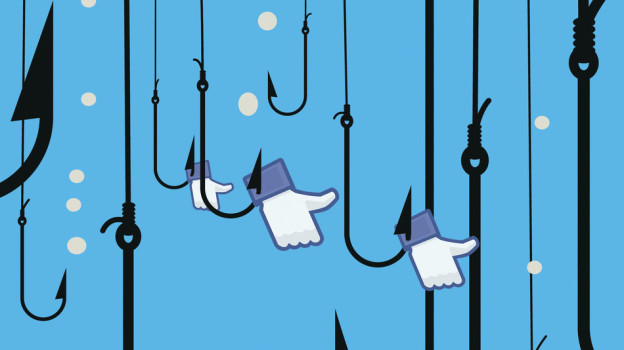You’re probably getting tired of seeing all those Upworthy-style headlines by now. So were newspaper readers in the 19th century.
Clickbait is much older than you think. Back in 1888, a political cartoon titled “The Evil Spirits of the Modern Day Press” lampooned the big papers of the day for falling back on “paid puffery”, “bad pictures”, “garbled news”, and, of course, “boasting lies.” A Post Titled “20th Century Headlines Rewritten to Get More Clicks”, which pokes fun at clickbait, is actually not that far off the mark at all. An actual headline from 1913 was “King Victor Shielded By His Queen From Assassin’s Bullets.”
Today, “yellow journalism” lives on in two forms: in the tabloids (print) and in clickbait (digital). Tabloids are much easier to ignore, but clicking is compulsive — something advertisers are more than aware of.
Clickbait —> PPC —> Clickbait
The pay-per-click (PPC) model of advertising, which is as old as the Internet itself, thrives because of the effectiveness of clickbait.
PPC has its proponents and detractors, but it’s hard to argue against the fact that most advertisers game the system by pumping out clickbait ads. And websites, which are paid every time an ad is clicked, have no reason to stop hosting clickbait ads. The more visitors click, the more the website is paid. Both the advertiser and the host site win.
The loser, of course, is the site visitor. She has to deal with an endless barrage of cheaply produced, gaudy clickbait. And when she does click on something, malware gets onto her computer. It’s why sites like Wikipedia are committed to staying ad-free, and why Google cleverly decided that running featured text ads in its search results (rather than banner ads) was the only way to go.
—> Native Advertisements
While Wikipedia and Google are both to be applauded for their thoughtfulness, the vast majority of websites still rely on clickbait to make a profit. And although all of us would prefer a web without clickbait, we’re so used to seeing awful banner ads that we’ve just learned to tune them out.
But inPowered isn’t satisfied. The fledgling mobile content engagement company has decided to swim against the current by declaring war on clickbait. In late 2014 they anounced that they will be the “first and only platform that charges advertisers based on the consumer’s actual engagement with their content.”
What does this mean? inPowered isn’t declaring war on PPC, but they are evangelizing “native advertisements”, which are more editorial in nature than regular ads (and often feature an industry expert or influencer).
For example, if Microsoft wanted to run an ad on an inPowered site about their latest version of Windows, they might run an ad that’s actually a piece of thought leadership written by one of their top minds (e.g., Satya Nadella) that explains how operating systems are evolving. Of course, the link to the Windows X product page would still be in the CTA, but by providing useful, actionable content, inPowered hopes that users will click on and engage with only the ads that are actually useful.
What Would Ogilvy Think?
David Ogilvy, the father of modern advertising (and the inspiration for Don Draper) once said that if an advertisement wasn’t selling, it was worthless. For the past half century, all advertisers have agreed. Which makes what inPowred is trying to do even more significant.
By paying only advertisements that visitors are actively engaging with, inPowered hopes to not only offer a viable alternative to the broken PPC system, but also to change the very nature of advertising. An engagement-payment system would reward content marketing-type ads more than direct response ads, and could slowly shift the angle of online advertising if more platforms follow suit.
Do you think inPowered’s new policy is a step forward that should be encouraged? Or will advertisers simply search for greener pasture?








